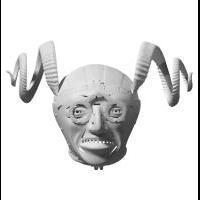
JuriBryan
Members-
Posts
241 -
Joined
-
Last visited
-
Days Won
1
JuriBryan last won the day on July 1 2014
JuriBryan had the most liked content!
About JuriBryan
- Birthday 09/26/1992
Contact Methods
-
Website URL
http://juribryanfx.com
-
Skype
JuriBryan
Personal Information
-
Name
Juri
-
Location
Bonn, Germany
-
Interests
VFX/FX, R&D, Pipeline
JuriBryan's Achievements
Newbie (1/14)
15
Reputation
-
dimitriall started following JuriBryan
-
HDK.... a place/tutorial to get all the information from would be awesome!
- 43 replies
-
I havent had the chance to take a look at Pradeep's file, but you can always scatter points in the dragon. then have a attribute growing (your melting mask) then use a time shift to go one frame back in time and compare the mask attribute so that you get only the points that just got activated. then delete those points out and source the flip sim from those. merge the result of that sim with the points of the dragon which did not get activated yet and mesh that.
-
you can try having lower values, and the map on points. then you multiply velocity values down with your map as a look up post solve. so that the new solve has less movement. that way you will get slower moving fluids where you have high viscocity and faster ones where you have lower settings. then to get the stacking you can try to use surface tension and divergence... the combination of that works for me normally doing high viscos fluids hanging and moving on fast moving characters/objects
-
nope in the sim. just use a geometry vop (its just like the attribute vop) and do it on the particle velocity stage. you can do all operations you need in there
-
geometry vop, check height of point, if its higher then what you want multiply y velocity down.
-
sopsolver, read in the first frame they exist, vopsop, first in put is current frame second the static frame, import attribute based on id grabbing P, pipe P old to current P and set v to 0,0,0. build in a switch based on a frame or color from that set up to standard. now you have per point activation driven by what ever you want. does not work with reseeding on and a emitting fluid... you need the same id values on the static points as you have on the current ones. Cheers, Juri
-
that did the trick! thanks a bunch
-
hi, I am currently trying to do the most basic thing... and failing. I have a bunch a cubes and want a noise drive them by updating the force on the points. And that works... for some of the points. I have no idea what could be wrong. I am attaching my file, and help would be awesome! Cheers, Juri packedRBD.test.01.hip
-
Particle motion blur render issue
JuriBryan replied to cowboy71's topic in Lighting & Rendering + Solaris!
point sop? in the copy you can just check that all attributes from the particles get copied over to the arrows, that should do the trick. if that does not work use a trail node! it will calculate the right velocities for you. -
lay down a transform node: put $CEX $CEY $CEZ into pivot, copy that channel into transform and put a - in front each one. now you bird will stay at the center points with out moving in space whiles rotational animations and geometry deformations stay the same. calculate vel on that and copy the values to your animation. done
-
I would go with pyro sims... all the way, at least for mid/background elements. and then layer a sim or packed rbds in for the forground. that way you get the mass and all that where you need it and the motion where you feel/see it.
-
I personally would go with a decent res smoke sim. do all the look deving of the motion on that/those sims. Then advect a shit ton of particles with those sims. render them with a constanst shader that catches shadows and a very small point size.
-
well I think it is like eetu said a "simple" idea, but to get it to work and to take it from a tech demo to an actual production is very hard and takes a lot of time. In the end it is always like testing water stuff with a cube falling in a flip, everything can work there. but take that setup into a shot and all hell breaks loose.
-
well it is not really driving on as I think you think it might. Its more like building a one of system. one big sim... that goes over ever state water can be in, going from the big waves down to smaller ones, to whitewater and then mist. all in one sim all in one go.... sounds crazy and it kinda is, but if you know micro solvers in can be really quite fast:D faster sometimes then to write out on sim do the emission calculations on there and then sim that. Since the micro solvers are so fast with volumes and calculations on them that it is faster then to do it in more then one step. and since it is all Geo based in the dops you can just isolate any of the parts in the sim after wards when you dont like that particular sim and just read the emission groups and fields from the cached sim instead of dops. So this set up gives you the best of both worlds. The file only shows the basics.. there is no feedback blending (particles just die) and no whitewater and no mist. but that should be easy to set up. Hope it helps a bit. Cheers, Juri FlipUpres.01.hip
-
yeah scale works much better now. and I dont think you should slow down the interaction part... I mean it is a giant robot walking through a waterfall.... sooo you would kind expect that:D and add white water! would be cool to see how it looks when you use a nother flip sim instead of white water.. and then add white water sim with pops on top of that. could help to add details






